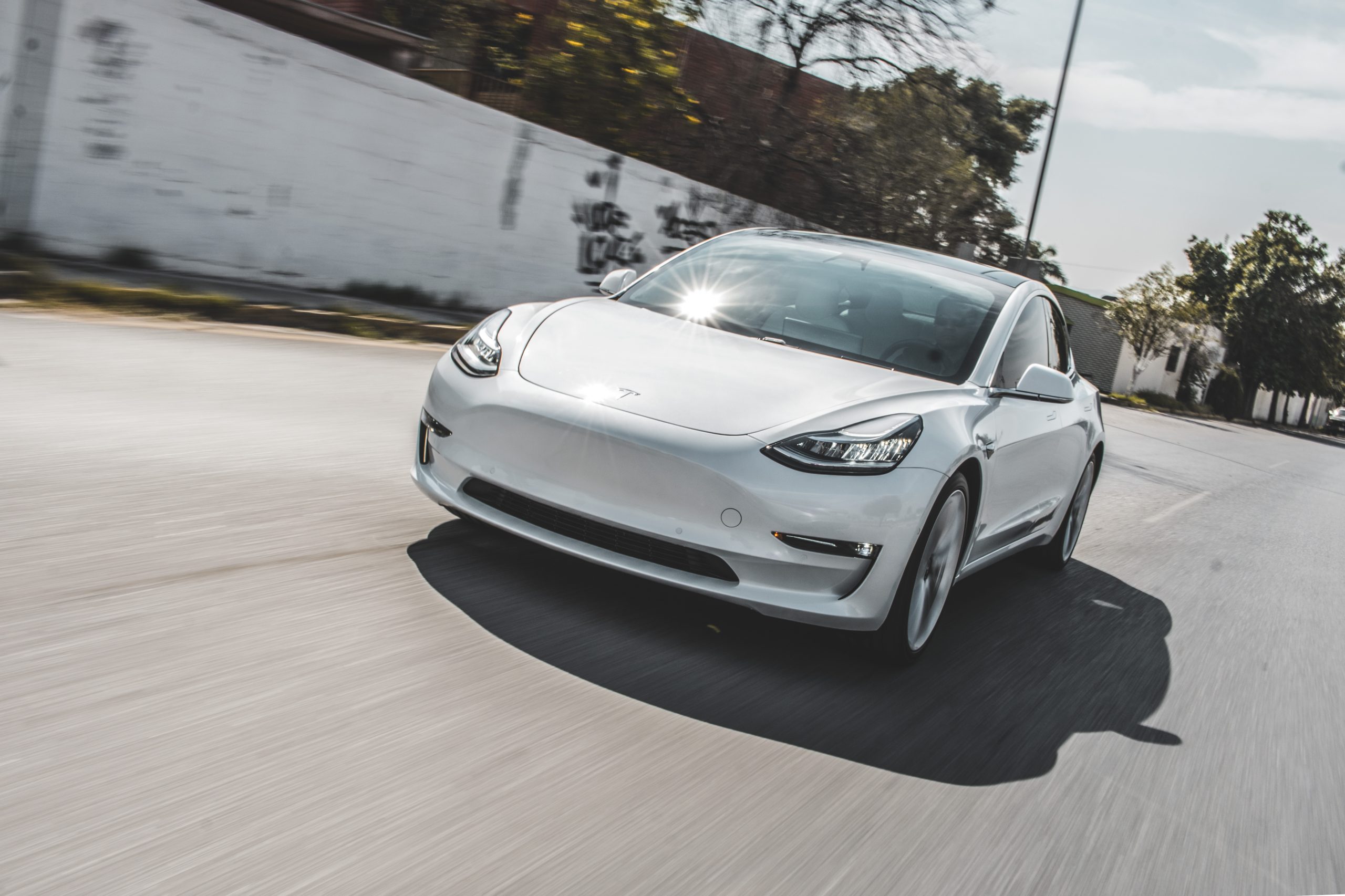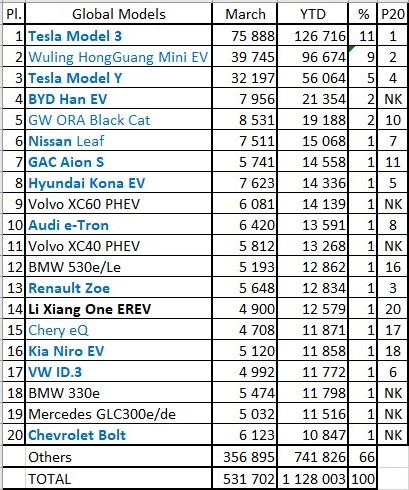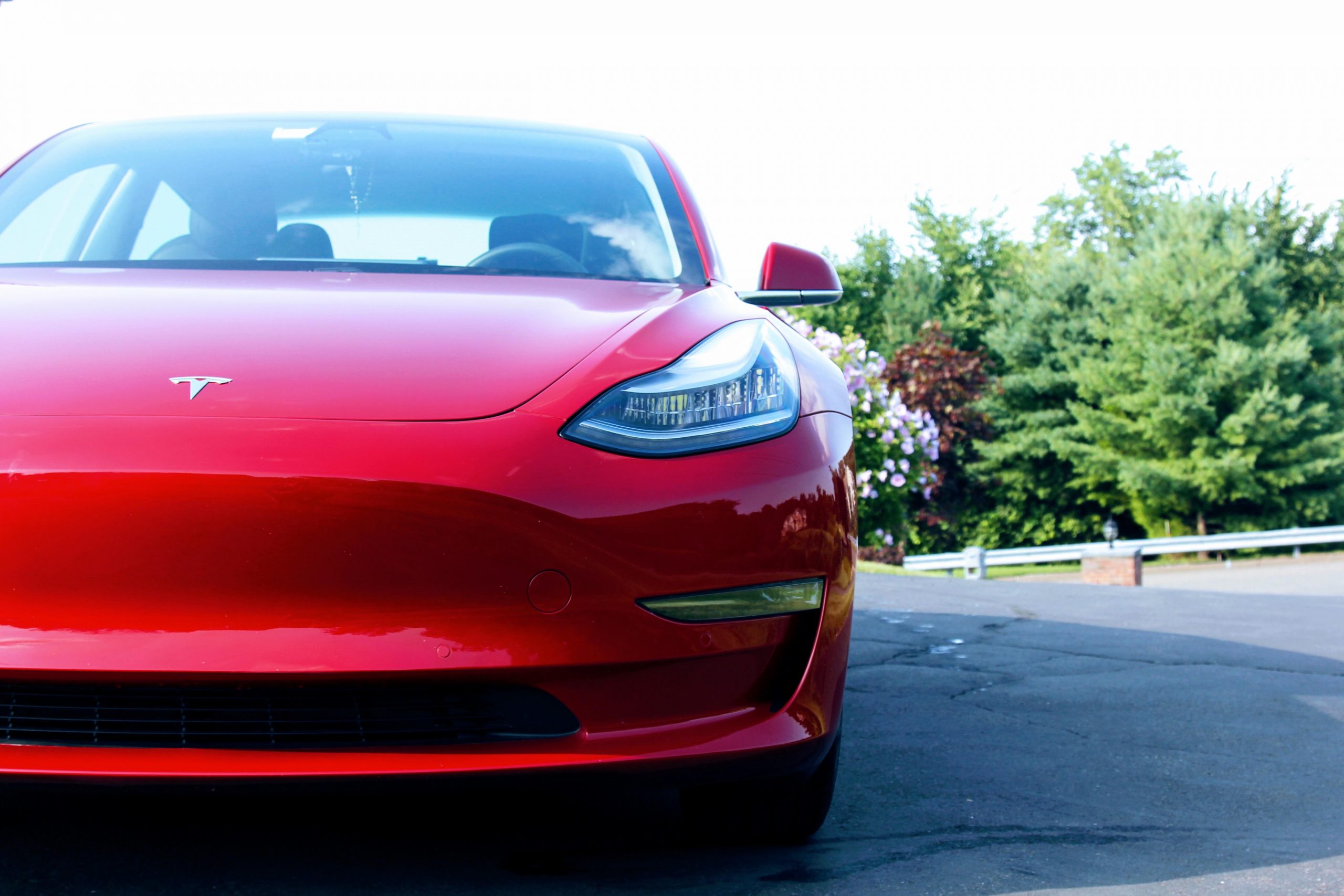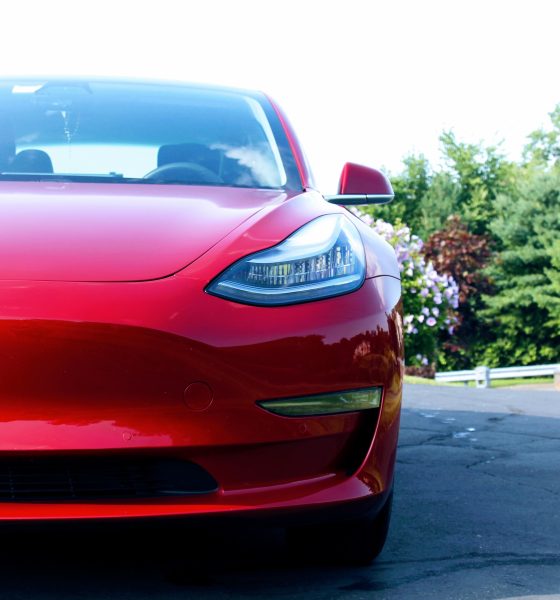The first quarter of 2021 proved something most of the electric vehicle community probably expected: the Tesla Model 3 was the best-selling EV through the first three months of the year.
After Tesla delivered 184,800 cars in Q1, a record-setting performance in terms of the company’s individual performance, it was realized by many that the California-based automaker would not need its flagship vehicles to assist in its industry-dominating efforts. While Tesla continued routine and accelerated production of the Model 3 and Model Y, the Model S and Model X took a backseat during Q1 2021. Tesla didn’t produce the two vehicles, and CEO Elon Musk indicated that his company was still ironing out some small discrepancies in designing the two, more-expensive EVs that it offers. However, that didn’t slump demand of the Model 3 or Model Y, and the two cars made up for an overwhelming majority of the company’s Q1 delivery figures.
(Photo: Andres GE)
While Tesla’s Q1 delivery statistics were a new record in the short but storied record books that the 18-year old company has, global statistics also fell in the company’s favor. While the Model 3 has continued to dominate markets like the United States and has battled with local, affordable rivals like the Wuling HongGuang Mini EV in China, the Model 3 secured its position as the most popular EV in the world in Q1, a statistic that likely doesn’t surprise many of those who are well-versed in the world of electric vehicles.
Starting at $38,990, the Model 3 was Tesla’s first mass-market vehicle. After grinding and pushing through what Elon Musk called “Production Hell,” Tesla solved production and manufacturing shortcomings to effectively build and deliver the Model 3. The vehicle brought Tesla to the mainstream and became one of the many ways that the company introduced the idea of affordable electric passenger transport to the industry. As a result, many other carmakers have attempted to derail the Model 3’s success with their own effective and affordable EVs, but nothing has matched the performance, range, affordability, and quality of the Model 3.
According to newly-released figures from the EV Sales Blog, Tesla sold 75,888 Model 3 units in March alone, making it Earth’s most popular EV during the third month of the year. However, add January and February into the mix, and cumulative Q1 statistics also fall in favor of the affordable Model 3 sedan, accounting for 126,716 units during the first quarter of 2021. The figure accounts for 11% of the global EV market share for the year, leading the Wuling HongGuang Mini EV in second, with an impressive 96,674 units sold in Q1.
Credit: EV Sales Blog
The Model 3 wasn’t Tesla’s only claim to fame through the first quarter; the Model Y also made an appearance on the hypothetical podium with a third-place finish. The all-electric Model Y crossover has only been delivered by Tesla for a little more than a year, but its youthful timeframe didn’t attribute to any lackluster sales figures. Just a year into its campaign, the Model Y accumulated 56,064 sales in Q1 2021, a commanding lead over the fourth-place BYD Han EV, with only 21,354 units sold.
The newly-released figures are a testament to the Model 3’s sustained popularity, even nearly four years after the car began initial deliveries. Tesla’s rollout of affordable vehicles has further established its dominance in a quickly growing EV sector. With plans to begin producing even more affordable models in the future, there appears to be no ceiling on Tesla’s potential.

News
Elon Musk’s Grok AI to be used in U.S. War Department’s bespoke AI platform
The partnership aims to provide advanced capabilities to 3 million military and civilian personnel.

The U.S. Department of War announced Monday an agreement with Elon Musk’s xAI to embed the company’s frontier artificial intelligence systems, powered by the Grok family of models, into the department’s bespoke AI platform GenAI.mil.
The partnership aims to provide advanced capabilities to 3 million military and civilian personnel, with initial deployment targeted for early 2026 at Impact Level 5 (IL5) for secure handling of Controlled Unclassified Information.
xAI Integration
As noted by the War Department’s press release, GenAI.mil, its bespoke AI platform, will gain xAI for the Government’s suite of tools, which enable real-time global insights from the X platform for “decisive information advantage.” The rollout builds on xAI’s July launch of products for U.S. government customers, including federal, state, local, and national security use cases.
“Targeted for initial deployment in early 2026, this integration will allow all military and civilian personnel to use xAI’s capabilities at Impact Level 5 (IL5), enabling the secure handling of Controlled Unclassified Information (CUI) in daily workflows. Users will also gain access to real‑time global insights from the X platform, providing War Department personnel with a decisive information advantage,” the Department of War wrote in a press release.
Strategic advantages
The deal marks another step in the Department of War’s efforts to use cutting-edge AI in its operations. xAI, for its part, highlighted that its tools can support administrative tasks at the federal, state and local levels, as well as “critical mission use cases” at the front line of military operations.
“The War Department will continue scaling an AI ecosystem built for speed, security, and decision superiority. Newly IL5-certified capabilities will empower every aspect of the Department’s workforce, turning AI into a daily operational asset. This announcement marks another milestone in America’s AI revolution, and the War Department is driving that momentum forward,” the War Department noted.
News
Tesla FSD (Supervised) v14.2.2 starts rolling out
The update focuses on smoother real-world performance, better obstacle awareness, and precise end-of-trip routing, among other improvements.

Tesla has started rolling out Full Self-Driving (Supervised) v14.2.2, bringing further refinements to its most advanced driver-assist system. The new FSD update focuses on smoother real-world performance, better obstacle awareness, and precise end-of-trip routing, among other improvements.
Key FSD v14.2.2 improvements
As noted by Not a Tesla App, FSD v14.2.2 upgrades the vision encoder neural network with higher resolution features, enhancing detection of emergency vehicles, road obstacles, and human gestures. New Arrival Options let users select preferred drop-off styles, such as Parking Lot, Street, Driveway, Parking Garage, or Curbside, with the navigation pin automatically adjusting to the user’s ideal spot for precision.
Other additions include pulling over for emergency vehicles, real-time vision-based detours for blocked roads, improved gate and debris handling, and extreme Speed Profiles for customized driving styles. Reliability gains cover fault recovery, residue alerts on the windshield, and automatic narrow-field camera washing for new 2026 Model Y units.
FSD v14.2.2 also boosts unprotected turns, lane changes, cut-ins, and school bus scenarios, among other things. Tesla also noted that users’ FSD statistics will be saved under Controls > Autopilot, which should help drivers easily view how much they are using FSD in their daily drives.
Key FSD v14.2.2 release notes
Full Self-Driving (Supervised) v14.2.2 includes:
- Upgraded the neural network vision encoder, leveraging higher resolution features to further improve scenarios like handling emergency vehicles, obstacles on the road, and human gestures.
- Added Arrival Options for you to select where FSD should park: in a Parking Lot, on the Street, in a Driveway, in a Parking Garage, or at the Curbside.
- Added handling to pull over or yield for emergency vehicles (e.g. police cars, fire trucks, ambulances).
- Added navigation and routing into the vision-based neural network for real-time handling of blocked roads and detours.
- Added additional Speed Profile to further customize driving style preference.
- Improved handling for static and dynamic gates.
- Improved offsetting for road debris (e.g. tires, tree branches, boxes).
- Improve handling of several scenarios, including unprotected turns, lane changes, vehicle cut-ins, and school buses.
- Improved FSD’s ability to manage system faults and recover smoothly from degraded operation for enhanced reliability.
- Added alerting for residue build-up on interior windshield that may impact front camera visibility. If affected, visit Service for cleaning!
- Added automatic narrow field washing to provide rapid and efficient front camera self-cleaning, and optimize aerodynamics wash at higher vehicle speed.
- Camera visibility can lead to increased attention monitoring sensitivity.
Upcoming Improvements:
- Overall smoothness and sentience.
- Parking spot selection and parking quality.
News
Tesla is not sparing any expense in ensuring the Cybercab is safe
Images shared by the longtime watcher showed 16 Cybercab prototypes parked near Giga Texas’ dedicated crash test facility.

The Tesla Cybercab could very well be the safest taxi on the road when it is released and deployed for public use. This was, at least, hinted at by the intensive safety tests that Tesla seems to be putting the autonomous two-seater through at its Giga Texas crash test facility.
Intensive crash tests
As per recent images from longtime Giga Texas watcher and drone operator Joe Tegtmeyer, Tesla seems to be very busy crash testing Cybercab units. Images shared by the longtime watcher showed 16 Cybercab prototypes parked near Giga Texas’ dedicated crash test facility just before the holidays.
Tegtmeyer’s aerial photos showed the prototypes clustered outside the factory’s testing building. Some uncovered Cybercabs showed notable damage and one even had its airbags engaged. With Cybercab production expected to start in about 130 days, it appears that Tesla is very busy ensuring that its autonomous two-seater ends up becoming the safest taxi on public roads.
Prioritizing safety
With no human driver controls, the Cybercab demands exceptional active and passive safety systems to protect occupants in any scenario. Considering Tesla’s reputation, it is then understandable that the company seems to be sparing no expense in ensuring that the Cybercab is as safe as possible.
Tesla’s focus on safety was recently highlighted when the Cybertruck achieved a Top Safety Pick+ rating from the Insurance Institute for Highway Safety (IIHS). This was a notable victory for the Cybertruck as critics have long claimed that the vehicle will be one of, if not the, most unsafe truck on the road due to its appearance. The vehicle’s Top Safety Pick+ rating, if any, simply proved that Tesla never neglects to make its cars as safe as possible, and that definitely includes the Cybercab.










